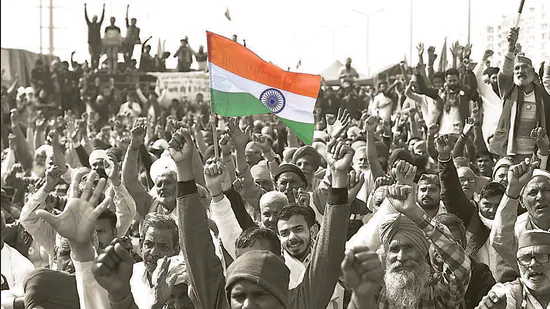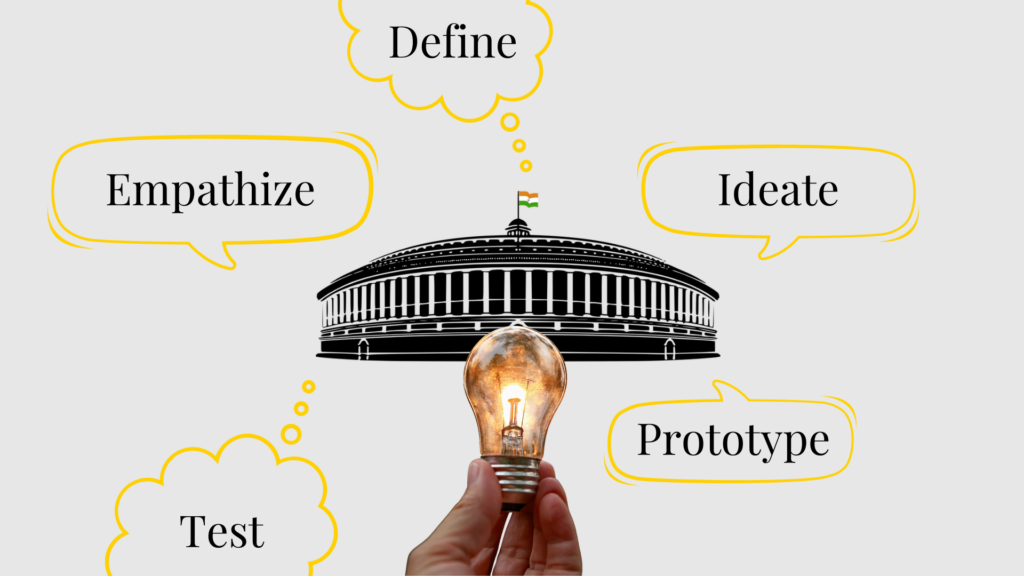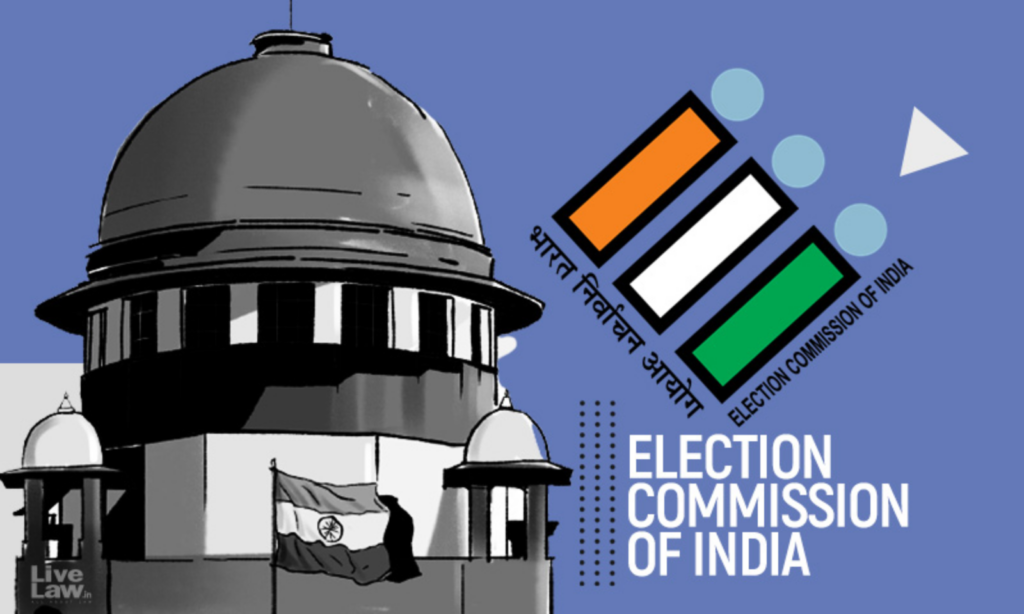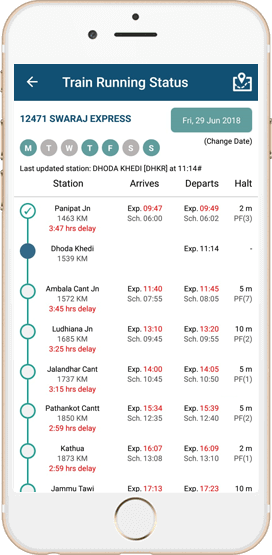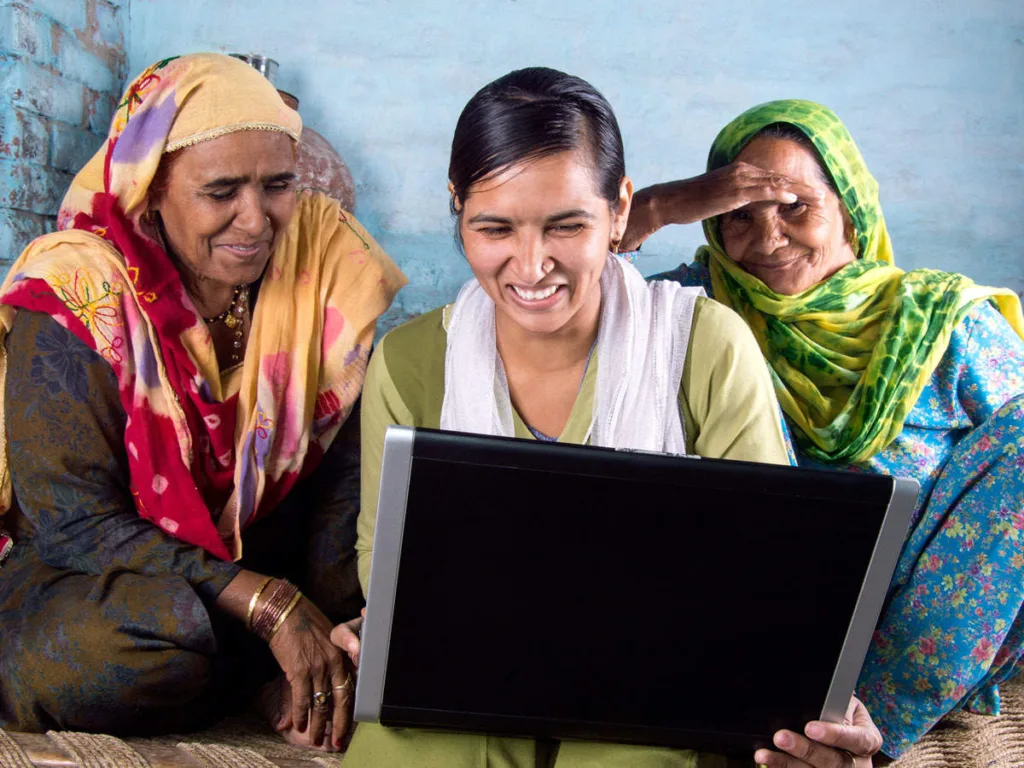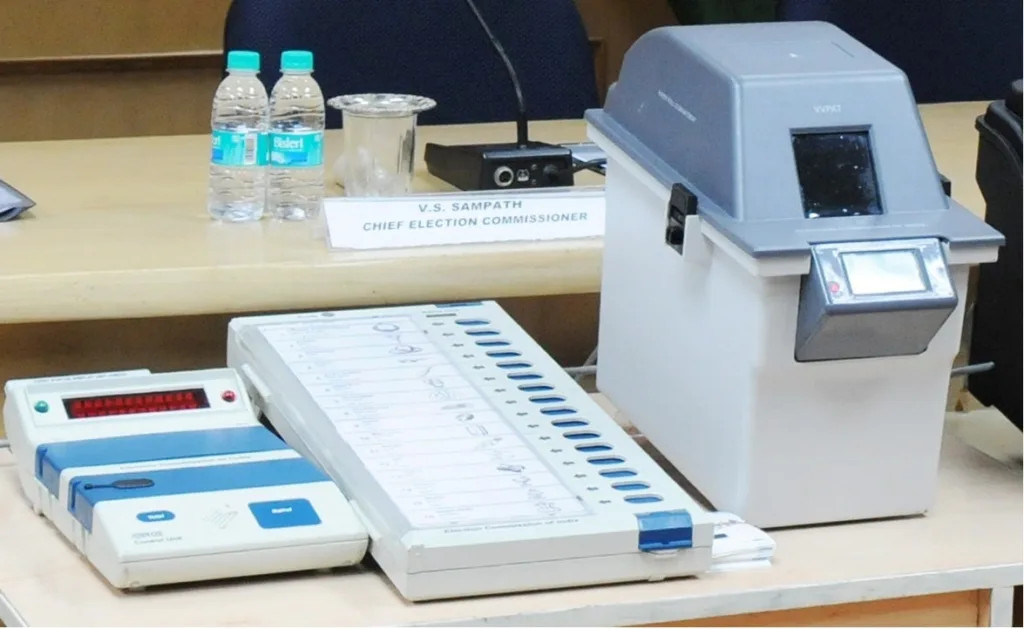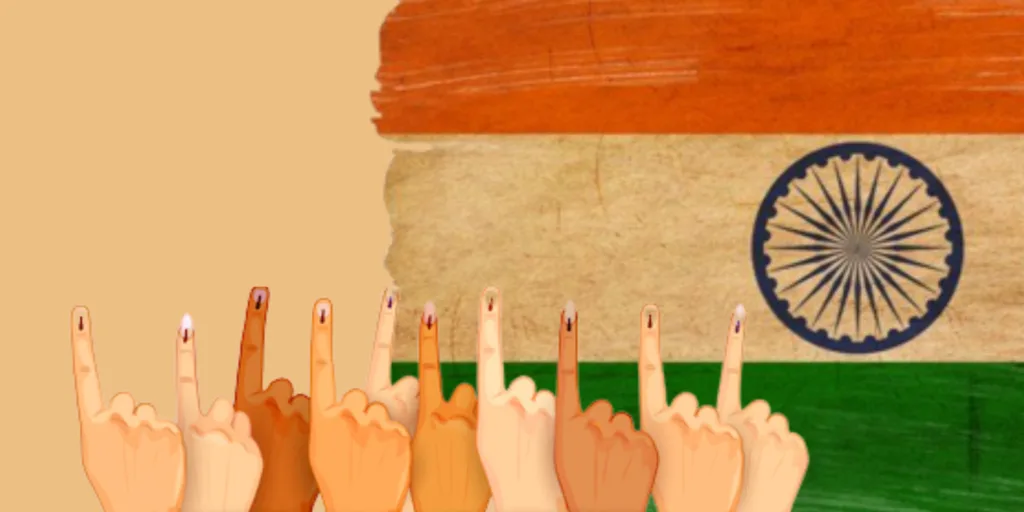Designing a Democracy: How the principles of human-centered design apply to India's governance
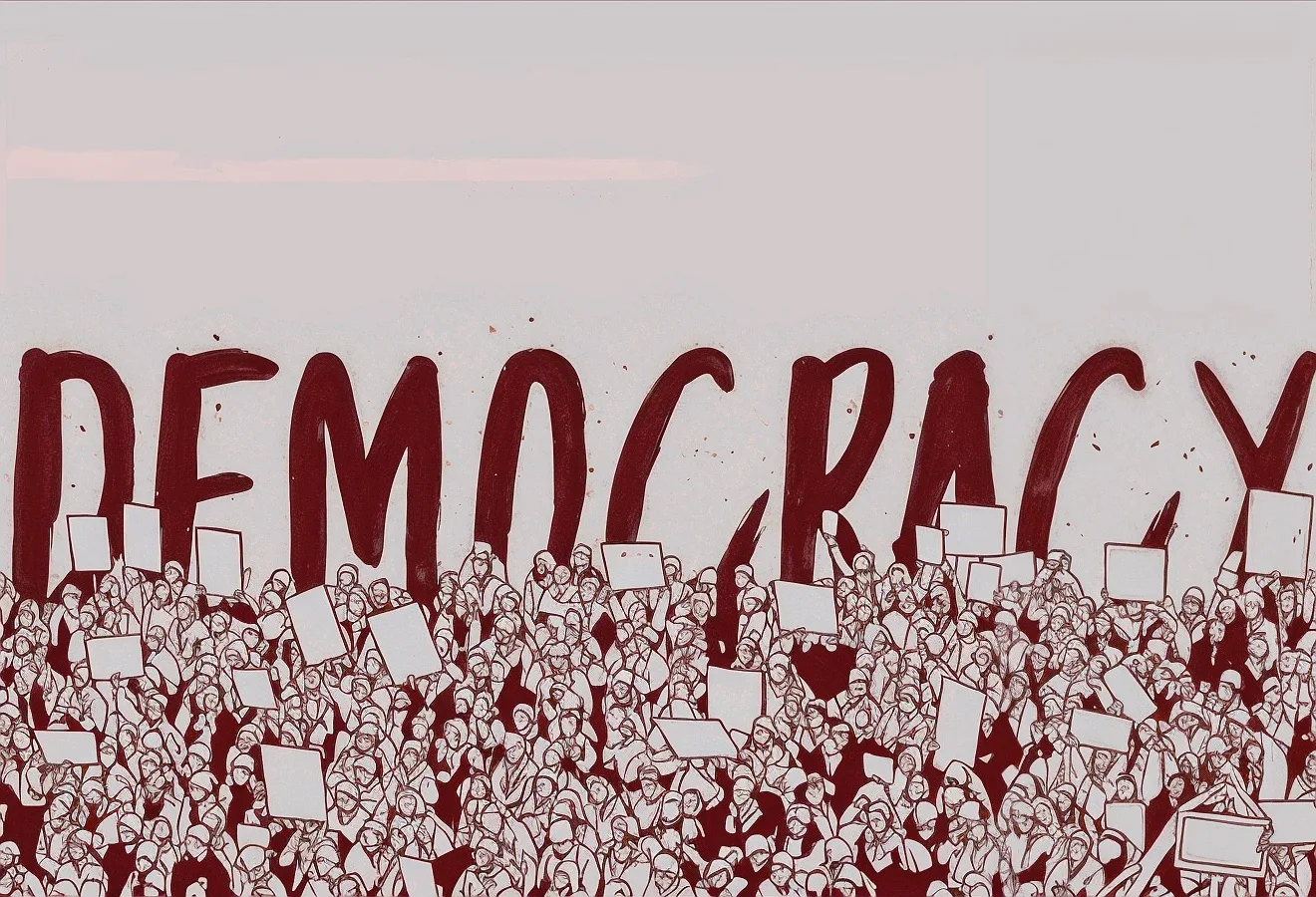
India, known as the world’s biggest democracy, faces many challenges and chances. As we look into how things work for its billion-plus people, we see that Indian democracy is always changing and trying new things. Let’s take a step back and analyze how we run the largest democracy by analyzing the pain points, gaps & solutions – all from a design thinking lens.
The Pains of Running the World’s Largest Democracy
Complexity and Diversity
Navigating the cultural richness and vast regional disparities of India poses a significant challenge. Balancing the diverse needs of its 1.4 billion citizens requires innovation at every turn.
For instance, strategies that work in the urban landscapes of Mumbai may falter in the rural heartlands of Bihar.
In a federal setup, each state has its own authority, but it needs to work closely with the central government. This can make putting policies into action more complicated, as they have to work together smoothly.
Designing for a population of billions necessitates a design thinking approach to ensure inclusivity and efficiency.
Inequality and Inclusivity
India has made progress in growing its economy, but there still exists a considerable social divide.
To bridge these gaps, we need more than just money – we need policies that focus on things like education, healthcare, and giving everyone a fair chance.
It’s about designing solutions that go beyond just throwing money at the problem, but instead, looking at the whole picture and finding ways to make things better for everyone.
Corruption and Accountability
Corruption is a big problem that stops things from getting better and makes people not trust the government. Making things more transparent and holding people accountable is really important.
- We can design and implement digital platforms that enable citizens to easily access information regarding government activities, budgets, and spending.
- Redesigning public service processes to minimize opportunities for corruption. This might involve simplifying procedures to reduce the number of touchpoints where corruption can occur
Political Fragmentation
India’s vibrant multi-party system adds another layer of complexity. Coalition governments, while a testament to democratic plurality, often wrestle with policy consistency. Designing governance frameworks that can sustain diverse viewpoints and foster effective decision-making is vital.
Design Thinking in India Democracy: Real-Life Examples
Election Commission of India (ECI):
From empathizing with voters to prototyping new technologies like Electronic Voting Machines (EVMs), the ECI exemplifies design thinking in enhancing electoral transparency and efficiency.
India’s 2024 election involves approximately 969 million voters.
These innovations have made the voting process smoother and more accessible, though they are continually tested and refined to adapt to India’s dynamic electoral environment.
- Empathize: The ECI engages with voters to understand their needs and challenges during elections. They conduct surveys, focus groups, and interactions to gather insights.
- Define: Based on this empathy phase, the ECI formulates clear election guidelines. They address voter concerns related to accessibility, security, and transparency.
- Ideate: Innovations like electronic voting machines (EVMs) were introduced to enhance efficiency. EVMs replaced paper ballots, reducing errors and speeding up the voting process. An EVM is designed to record a maximum of 3840 votes.
- Prototype: Before nationwide implementation, the ECI rigorously tests new voting technologies. Pilots are conducted in select constituencies to identify any issues.
- Test: Rigorous testing ensures smooth elections. ECI collaborates with experts, political parties, and citizens to validate the system’s effectiveness.
Aadhaar (Unique Identification Authority of India)
The evolution of Aadhaar, from understanding people’s needs to trying out different ideas, showcases how design thinking can be used to develop a single identification system that works for everyone.
- Empathize: Understanding citizens’ identity needs led to Aadhaar’s creation. Millions lacked proper identification, hindering access to services.
- Define: Aadhaar defines a unique identification system for all residents. It assigns a 12-digit number linked to biometric data.
- Ideate: Aadhaar’s digital infrastructure revolutionized service delivery. It streamlined processes for subsidies, banking, and welfare programs.
- Prototype: Iterative improvements refined the system. Aadhaar’s initial rollout faced challenges, but continuous feedback and updates improved its reliability.
- Test: Aadhaar’s impact on welfare distribution was rigorously assessed. Studies evaluated its effectiveness in reaching beneficiaries and reducing leakages.
Digital India Initiative
This initiative aims to bridge the digital divide, with a sharp focus on inclusivity. By fostering innovations like the Unified Payments Interface (UPI) and advancing digital literacy, Digital India seeks to bring the power of the digital revolution to every corner of the nation.
- Empathize: Understanding the digital divide, the government recognized that many people were left out because they didn’t have access to digital services. This was mainly because of gaps in infrastructure, like poor internet connectivity and limited access to devices like smartphones or computers.
- Define: Digital India set clear goals for digital infrastructure and services. It aimed to connect rural areas, promote e-governance, and empower citizens.
- Ideate: Innovations like the Unified Payments Interface (UPI) transformed financial transactions. UPI enabled seamless, real-time fund transfers across banks and apps.
- Prototype: Digital literacy programs empowered citizens. Training centers equipped people with digital skills, bridging the knowledge gap.
- Test: Monitoring digital inclusion metrics ensures progress. Regular assessments track internet penetration, e-services adoption, and rural connectivity.
Indian Railways: Enhancing Commuter Experience
The objective was clear: make every journey smoother and more pleasant. To achieve this, Indian Railways turned to innovative solutions such as upgrading station facilities, implementing real-time updates to keep passengers informed, and enhancing overall cleanliness.
- Empathize: Indian Railways serves millions of daily commuters across the vast expanse of India. Understanding their pain points is crucial to improving their experience. These include issues such as overcrowded trains, frequent delays, and discomfort during travel.
- Define: With the goal of enhancing the experience for all types of commuters, from daily travelers to occasional ones, Indian Railways aims to address these pain points effectively.
- Ideate: To tackle these challenges, Indian Railways explores various innovative solutions. These include upgrading station facilities to provide better amenities, implementing real-time updates to keep passengers informed about train schedules and delays, and focusing on improving overall cleanliness.
- Prototype and Test: Indian Railways adopts a phased approach to implement changes. By testing solutions incrementally, they can gather feedback and make continuous improvements to enhance the commuter experience.
Healthcare Innovations During COVID-19
When India faced the challenge of vaccinating its vast population during the COVID-19 pandemic, it required innovative solutions across various stages, from drug discovery to vaccine facilitation.
Here’s how healthcare professionals & organizations adopted a design thinking approach:
- Empathize: Healthcare professionals worldwide faced similar challenges, prompting innovative responses. In India, understanding the need for widespread vaccination drove initiatives such as mobile vaccination camps and community outreach programs.
- Define: Identifying the barriers to vaccine accessibility and distribution enabled targeted interventions. This involved addressing issues like vaccine hesitancy, logistical constraints, and equitable distribution.
- Ideate: To overcome these challenges, various innovative strategies were devised. These included leveraging technology for vaccine registration and appointment scheduling, establishing dedicated vaccination centers, and deploying mobile vaccination units to reach remote areas.
- Prototype and Test: Rapid implementation of these solutions, coupled with continuous feedback loops, ensured timely adjustments and optimization of the vaccine distribution process, ultimately leading to broader vaccine coverage across the country.
Gaps & Opportunities for Inclusivity in Indian Democracy
Digital Literacy
While over 55% of Indians have access to broadband, only 20% have the ability to use the internet effectively. In a world increasingly dominated by technology, a significant gap in digital literacy persists, leaving a large portion of the population sidelined from the growing digital economy.
Recognizing the need to bring everyone on board, various stakeholders, including governments and NGOs, need to initiate comprehensive digital literacy programs.
These programs will need to target all age groups but are particularly focused on underserved communities where access to technology is limited.
To complement these educational efforts, tech companies are stepping in to design more user-friendly technologies.
By developing devices and applications with simplified interfaces and voice-guided assistance, technology becomes accessible to individuals with varying levels of digital expertise.
Moreover, public-private partnerships are flourishing, leading to the creation of community technology centers. These centers not only provide the necessary infrastructure in both rural and urban areas lacking it but also become hubs where individuals can learn and practice new digital skills, thereby fostering a digitally inclusive society.
Decentralization
Empowering Local Governance: By implementing frameworks that enhance the powers of local bodies, there is an opportunity to foster governance that is more responsive to the specific needs and circumstances of local communities.
Design Thinking Workshops: Local governments could host design thinking workshops to involve citizens in the problem-solving process. This approach not only engages the community but also ensures that solutions are well-suited to local needs.
Technology Integration: Leveraging technology to improve communication and streamline processes between different levels of government presents an opportunity to enhance the efficiency and responsiveness of governance.
Imagine a farmer in the most remote part of India being able to utilize predictive analytics, crop monitoring & various other technologies. At NetBramha Studios, we designed, from scratch, a unique & innovative farming solutions platform that empowers Indian farmers to become more tech-savvy & leverage the power of agritech design, for Seedworks, a pioneering plant-science based company.
Inclusive Policies
Comprehensive Research: There is a need for thorough qualitative research to better understand the causes and effects of social disparities. These could include inequalities in income, education, health, employment, or access to services. This research can inform more effective and targeted policy development.
Stakeholder Engagement: Involving a broad spectrum of stakeholders, especially marginalized groups, in the policy-making process is crucial. This engagement helps ensure that policies are inclusive and reflective of diverse community needs.
Monitoring and Evaluation: Establishing robust systems to monitor and evaluate the impact of policies provides an opportunity to adapt and refine strategies, ensuring they remain effective and relevant.
Electoral Reforms
Blockchain Technology: Implementing blockchain technology in voting systems offers an opportunity to enhance transparency and security, building trust in the electoral process. This could involve creating a decentralized ledger for recording votes, ensuring that each vote is cryptographically secured – This means once a vote is recorded on the blockchain, it cannot be altered, helping to prevent fraud and ensuring the integrity of the electoral process.
Voter Education: Educating the electorate about new voting technologies and electoral reforms can help increase voter engagement and turnout.
Accessibility Enhancements: There is a critical opportunity to make voting more accessible through innovations such as mobile voting solutions or improved polling station accessibility, ensuring that all citizens can participate in the electoral process easily and effectively.
Emerging Democratic Solutions with Design Thinking
Citizen-Centric Services
Feedback and Grievance Redressal Platforms: Develop digital platforms that are easily accessible and user-friendly, where citizens can submit feedback, complaints, or suggestions directly to relevant authorities. This could involve mobile apps or websites with simple, intuitive interfaces.
User Experience Focus: Apply design thinking principles to ensure these platforms are designed with the end-user in mind. This involves testing with real users, iterating based on feedback, and simplifying the process to minimize barriers to engagement.
Community Helpdesks: Establish local helpdesks that assist citizens in navigating services and voicing concerns, ensuring those without digital access can also participate.
Transparent Decision-Making
Visualization Tools: Utilize data visualization tools to make policy impacts understandable to the general public. Infographics, interactive maps, and dashboards can illustrate how decisions affect different community segments.
Inclusive Workshops and Forums: Organize regular workshops and public forums where policymakers use design thinking exercises to involve citizens in the ideation process. This helps in gathering diverse opinions and fostering a collaborative environment.
Real-Time Feedback Mechanisms: Implement systems where feedback on policy can be given in real-time, allowing for a more dynamic interaction between citizens and government.
Responsive Governance
Iterative Policy Design: Adopt a mindset of continuous improvement, where policies are treated as products that need regular updates based on new data and insights. This approach involves piloting small-scale versions of policies, gathering data on their impact, and refining them iteratively.
Data-Driven Decision Making: Leverage big data analytics to gain insights into how policies are performing in real-time. Use this data to make informed decisions that are more aligned with current needs and circumstances.
Cross-Sector Collaboration: Encourage collaboration across different sectors and disciplines to bring in fresh perspectives and expertise, which can lead to more innovative and effective governance solutions.
India’s democratic journey is as challenging as it is inspiring. Leveraging design thinking not only provides innovative solutions but also ensures these solutions are humane, user-focused, and dynamic. As we look to the future, the blueprint for a more inclusive, effective democracy seems not just necessary, but achievable. As India continues its democratic journey, design thinking can be the catalyst for a brighter, more participatory future.
Design Thinking gives a step-by-step way to deal with big tasks like making policies or starting development projects. This is really helpful in places like India, where there are lots of different cultures and some areas are more developed than others. With Design Thinking, you can break things down into smaller steps and keep checking how things are going. This helps the government work better and understand what people need.
Even though people talk a lot about having a government that cares and using good ideas to help society, actually doing it can be tricky. But by using Design Thinking in making policies, we can make sure the government really listens to people’s needs and works well for everyone. This means not just fixing problems when they pop up, but also getting lots of different people involved in coming up with solutions that really make a difference.
